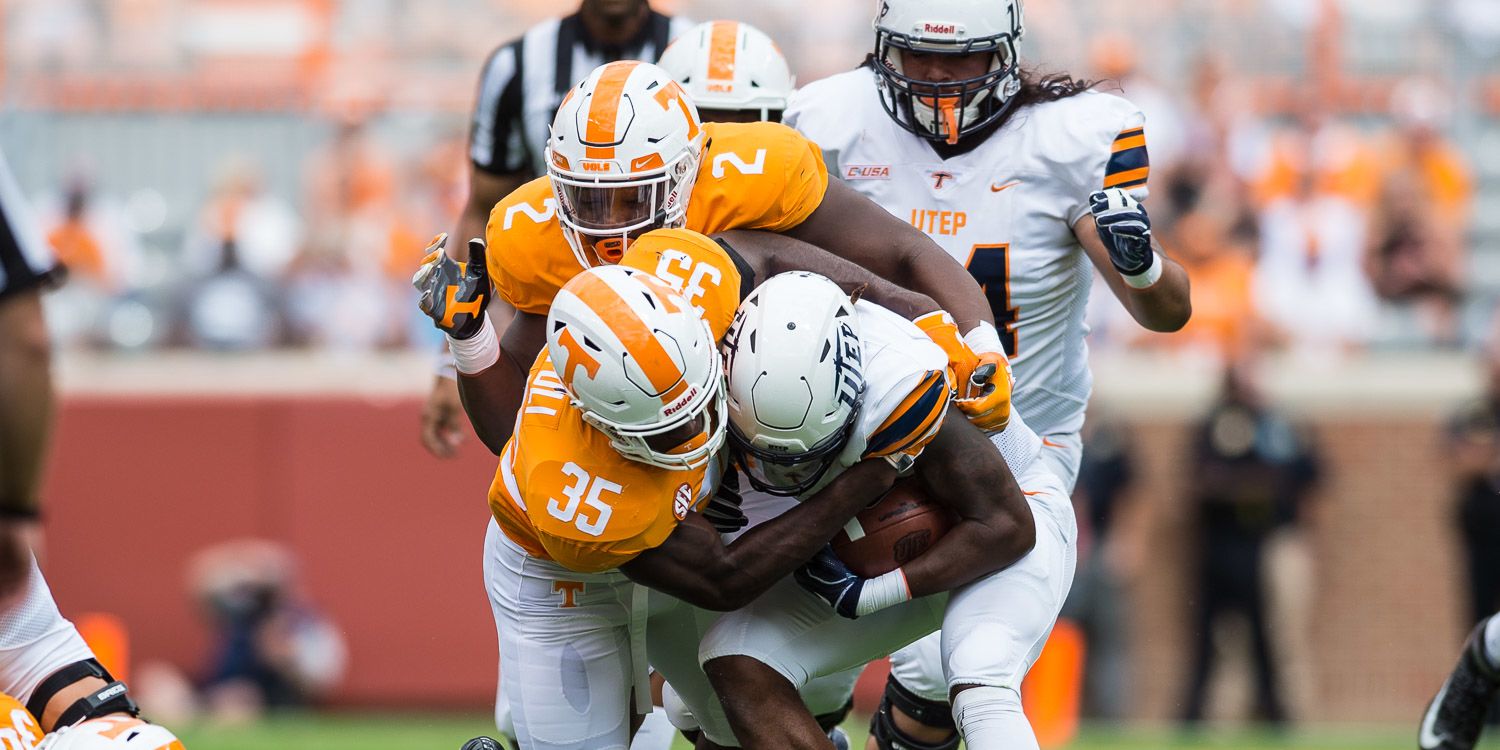Here are Tennessee’s stops in the red zone last season:
- Alabama went for it on fourth down up 58-21 with four minutes left
- South Carolina took a knee in the red zone at the end of the game
- Kentucky had a field goal blocked with the Vols up 24-7 with 12 minutes left
- Vanderbilt missed a field goal leading 17-7 early in the third quarter
And that’s it.
Opponents converted 41 of 45 red zone opportunities against the Vols last year, 91.1%, and only two of those four stops came in meaningful situations. That scoring percentage ranked 120th nationally last fall. Opponents scored touchdowns 30 times in those 45 trips; a 66.7% red zone touchdown percentage ranked 90th nationally.
(stats via SportSource Analytics)
As you might expect, the Vols were bad at this in 2017 too: 50 red zone visits, only five stops. Tennessee also gave up 35 touchdowns in those visits; 70% is Tennessee’s worst red zone touchdown percentage of the decade.
But it’s also a stat the Vols haven’t excelled at in a long time. In 2015 Tennessee held teams to a 56.1% touchdown percentage, but gave up seven touchdowns in eight visits against Oklahoma and Florida, setting a tone that was hard to forget. In 2014 Tennessee allowed only 34 red zone visits, but gave up points 32 times. You have to go back to teams with Fulmer’s final recruits on them to find more success: a 45.5% touchdown percentage in 2009, 52.1% with a 79.2% scoring percentage in 2010.
A note of interest for 2019: on offense, last year Mississippi State led the SEC in red zone touchdown percentage at 69.1%; BYU was slightly better at 69.2%. Those two teams don’t strike the same extreme fears as some of Tennessee’s recent non-conference and cross-divisional opponents, but both were incredibly efficient in the red zone.
If last year was about getting out of the basement, consider the progress available if Tennessee just moves toward average football in some of these key categories. Last season the Vols moved from rankings in the 120’s to rankings in the 80’s and 90’s in many categories. The median for turnovers forced last year was 19; Tennessee forced only 15. The median for red zone scoring percentage allowed was 83%, with a 60% touchdown percentage. If the Vols can just get from 91% and 67% to those average numbers, it can make a real difference in close games.
One big question for both turnovers and stops in the red zone: who are the playmakers on defense? The Vols will need more than Darrell Taylor and their sophomore corners to make a meaningful difference here.
